In the field of genetic algorithms (GA), roulette wheel selection plays a pivotal role in guiding evolutionary choices and optimizing solutions. This powerful method utilizes a selection process that mimics the mechanics of a casino roulette wheel, where each potential solution corresponds to a segment on the wheel.
As the wheel spins, the needle lands on one of the segments, determining which solution is chosen for reproduction and further evolution. This selection process is based on the principle of probability, with fitter individuals having a higher chance of being selected.
To comprehend roulette wheel selection fully, it is essential to delve into its algorithm, understand the implementation of probability, and grasp the pseudo code that underlies its functionality.
In this article, we will explore roulette wheel selection, providing an in-depth analysis of its mechanics, algorithm, probability, and pseudo code. By gaining a thorough understanding of this method, you will be equipped to optimize evolutionary choices and solve complex problems within genetic algorithms.
What is Roulette Wheel Selection?
Roulette wheel selection is a fundamental method used in genetic algorithms (GA) to guide the evolutionary process and optimize solutions. To understand how it works, let’s delve into the algorithm and method behind this selection process.
The roulette wheel selection algorithm involves assigning a fitness value to each individual in the population. This fitness value represents the probability of an individual being selected for reproduction. The higher the fitness value, the greater the chances of selection. The roulette wheel selection method is also known as fitness-proportional selection or stochastic sampling with replacement.
The algorithm determines selection probabilities by dividing each individual’s fitness value by the total fitness of the population. This creates a probability distribution where fitter individuals have a higher probability of being chosen. The roulette wheel metaphor represents this distribution as a wheel divided into segments proportional to the individuals’ selection probabilities.
During the selection process, a spin of the roulette wheel is simulated. A random number between 0 and 1 is generated, and the wheel is spun until the cumulative probability exceeds the generated number. The individual corresponding to the segment where the spin lands is selected for reproduction.
This method allows for both exploration and exploitation in the genetic algorithm. Fit individuals have a higher chance of selection, but the presence of less fit individuals ensures that the search space is thoroughly explored.
“Roulette wheel selection enables genetic algorithms to mimic the process of natural selection, favoring fitter individuals while maintaining diversity within the population.”
Understanding the roulette wheel selection algorithm and method is crucial for optimizing the performance of genetic algorithms and achieving desired solutions. In the next section, we will explore roulette wheel selection probability and its implementation further.
Roulette Wheel Selection Algorithm Steps
| Step | Description |
|---|---|
| 1 | Assign fitness values to individuals in the population. |
| 2 | Calculate the total fitness of the population. |
| 3 | Compute selection probabilities for each individual by dividing their fitness value by the total fitness. |
| 4 | Create a roulette wheel representation based on the selection probabilities. |
| 5 | Repeat the following steps until the desired number of individuals are selected: |
| a. Generate a random number between 0 and 1. | |
| b. Spin the roulette wheel by accumulating the selection probabilities until the cumulative probability exceeds the random number. | |
| c. Select the individual corresponding to the segment where the spin lands. |
Exploring Roulette Wheel Selection Probability
Probability is a fundamental concept in the process of roulette wheel selection. It determines the likelihood of an individual being selected for reproduction based on its fitness value. Understanding the calculation of probabilities is crucial for implementing roulette wheel selection effectively.
In roulette wheel selection, each individual in the population is assigned a selection probability. This probability represents the individual’s chance of being chosen for reproduction. The selection probabilities are calculated by normalizing the fitness values of the individuals, ensuring that the sum of all probabilities equals 1.
The formula to calculate the selection probability of an individual is as follows:
Selection Probability = Fitness Value / Sum of Fitness Values in the Population
This formula ensures that the individuals with higher fitness values have a greater probability of being selected for reproduction.
To implement roulette wheel selection, we follow these steps:
- Calculate the fitness values of all individuals in the population.
- Normalize the fitness values by dividing each value by the sum of all fitness values.
- Generate a cumulative probability distribution by summing up the selection probabilities.
- Generate a random number between 0 and 1.
- Select the individual corresponding to the first cumulative probability greater than the random number.
This process is repeated until the desired number of individuals is selected for reproduction.
Understanding the concept of probability and its implementation in roulette wheel selection is essential for optimizing genetic algorithms and achieving the desired evolutionary outcomes.
In the next section, we will illustrate the roulette wheel selection method with an example, providing further clarity on how it works in practice.
Illustrating Roulette Wheel Selection with an Example
In order to gain a clearer understanding of the roulette wheel selection method in genetic algorithms, let’s explore a practical example that demonstrates its application in solving a specific problem. By following this example, we can delve deeper into the mechanics of roulette wheel selection and grasp its significance in the context of evolutionary choices and optimization.
Imagine we have a genetic algorithm designed to solve a traveling salesman problem, where the objective is to find the shortest route for a salesman to visit a set of cities and return to the starting point. The algorithm represents each potential solution (route) as a chromosome, with each gene representing a city.
Now, let’s consider a population of chromosomes:
| Chromosome | Fitness |
|---|---|
| Chromosome 1 | 150 |
| Chromosome 2 | 120 |
| Chromosome 3 | 200 |
| Chromosome 4 | 180 |
The fitness value of each chromosome represents its suitability or quality as a solution to the problem. Higher fitness values indicate better solutions. In roulette wheel selection, the probability of selecting a particular chromosome for reproduction is proportional to its fitness value compared to the total fitness of the population.
To calculate the selection probabilities, we can use the following formula:
P(i) = fitness(i) / Σ(fitness)
Where P(i) is the selection probability of chromosome i, fitness(i) is the fitness value of chromosome i, and Σ(fitness) is the sum of the fitness values of all chromosomes in the population.
Let’s apply this formula to our example:
| Chromosome | Fitness | Selection Probability |
|---|---|---|
| Chromosome 1 | 150 | 0.23 |
| Chromosome 2 | 120 | 0.18 |
| Chromosome 3 | 200 | 0.31 |
| Chromosome 4 | 180 | 0.28 |
Based on the selection probabilities, a roulette wheel can be constructed. This virtual wheel is divided into segments proportional to each chromosome’s selection probability. To select chromosomes for reproduction, a spinning wheel metaphor is used, where a pointer randomly lands on a segment representing a chromosome.
For instance, if the wheel spins and the pointer lands on Chromosome 3, it will be selected for reproduction. The more segments a chromosome occupies on the roulette wheel, the higher its probability of selection.
This example helps illustrate how roulette wheel selection operates in a genetic algorithm. By emphasizing the selection of chromosomes with higher fitness values, it promotes the propagation of fitter solutions within the population, mimicking the process of natural selection in an evolutionary context.
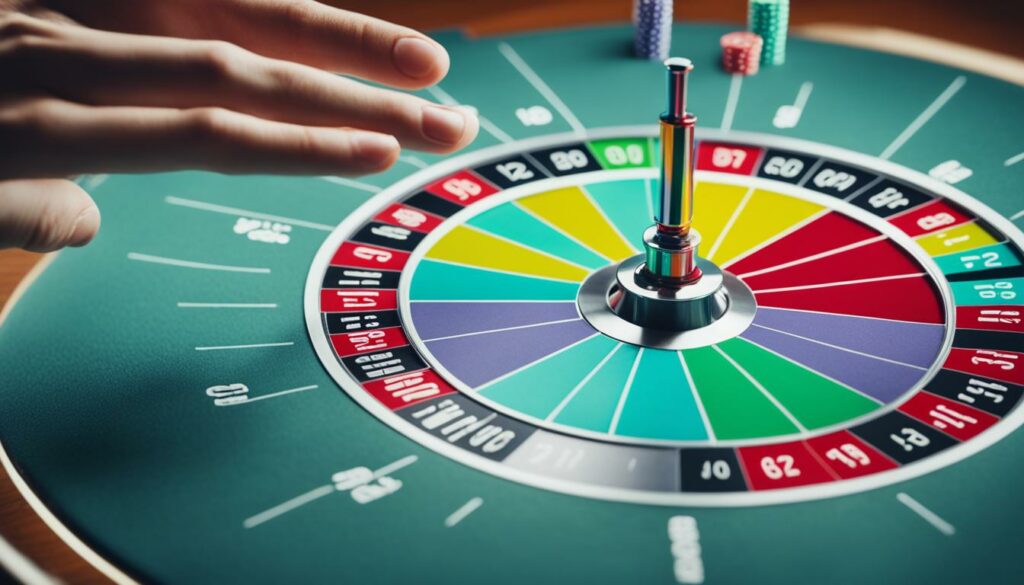
By applying roulette wheel selection in genetic algorithms, we can effectively navigate the search space and guide the optimization process towards the most optimal solutions. Understanding the mechanics behind roulette wheel selection is crucial in harnessing its power for solving complex problems and achieving efficient evolutionary choices.
Understanding the Pseudo Code of Roulette Wheel Selection
In order to implement roulette wheel selection effectively, it is important to understand the pseudo code that drives its step-by-step process. This section will break down the pseudo code and explain its significance in the roulette wheel selection process.
The pseudo code for roulette wheel selection typically follows these key steps:
- Calculate the total fitness of all individuals in the population.
- Normalize the fitness values to create a probability distribution.
- Generate a random value between 0 and 1.
- Select individuals based on their cumulative probability until the desired number of selections is made.
Let’s take a closer look at each step:
- Calculating total fitness: This involves summing up the fitness values of all individuals in the population. The fitness value represents how well an individual can solve the given problem.
- Normalizing fitness values: This step involves converting the fitness values into probabilities. Each individual’s fitness value is divided by the total fitness to determine its normalized probability.
- Generating a random value: A random value between 0 and 1 is generated to serve as a benchmark for selecting individuals in the next step.
- Selecting individuals: The individuals are selected based on their cumulative probability. The individuals with higher probabilities have a greater chance of being selected.
By following this pseudo code, roulette wheel selection ensures that individuals with higher fitness values have a higher probability of being selected, mimicking the principles of natural selection and survival of the fittest.
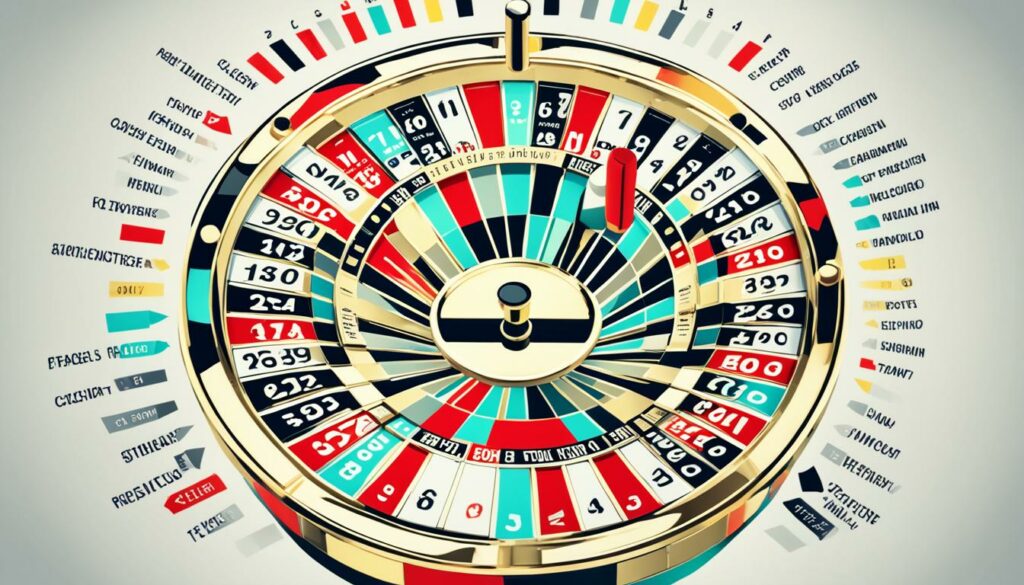
The Significance of Pseudo Code in Roulette Wheel Selection
The pseudo code provides a clear and structured guide for implementing roulette wheel selection in genetic algorithms. It helps developers and researchers understand the underlying logic behind the selection process and enables them to customize and optimize the algorithm based on their specific requirements.
With a firm grasp of the pseudo code, individuals can effectively implement and experiment with roulette wheel selection to achieve better optimization results within genetic algorithms.
Conclusion
In this article, we have explored the mechanics of roulette wheel selection in genetic algorithms (GA). By understanding the algorithm, probability, implementation, and pseudo code of roulette wheel selection, we can harness its power to optimize evolutionary choices and problem-solving within GA.
Roulette wheel selection is a crucial method used in GA for guiding evolutionary choices and achieving optimization. It ensures that individuals with higher fitness have a greater chance of being selected for reproduction, leading to the generation of improved solutions over time.
Understanding the concept of roulette wheel selection probability is key to its implementation. By assigning selection probabilities proportional to individual fitness, this method allows for effective exploration and exploitation of the search space, enabling GA to converge towards optimal solutions.
By following the pseudo code of roulette wheel selection, we can implement this method in our own GA projects. The step-by-step guide provided by the pseudo code helps in ensuring the correct and efficient execution of roulette wheel selection, further enhancing the performance and effectiveness of our genetic algorithms.
FAQ
What is roulette wheel selection?
Roulette wheel selection is a method used in genetic algorithms (GA) to guide the selection of individuals for reproduction. It is based on the concept of a roulette wheel, where individuals with higher fitness have a greater chance of being selected for reproduction.
How does roulette wheel selection work?
In roulette wheel selection, each individual in the population is assigned a slice of the roulette wheel’s circumference proportional to their fitness. A spin of the wheel is then performed to select one or more individuals for reproduction. The probability of selection is directly proportional to the fitness of the individual, with fitter individuals having a higher chance of being selected.
What is the probability involved in roulette wheel selection?
The probability in roulette wheel selection is determined by the fitness of each individual relative to the total fitness of the population. The higher an individual’s fitness, the larger its associated slice on the roulette wheel, and the higher its probability of being selected.
Can you provide an example to illustrate roulette wheel selection?
Sure! Let’s say we have a population of four individuals with fitness values of [0.1, 0.3, 0.2, 0.4]. The total fitness of the population is 1.0. The roulette wheel representation would allocate slices on the wheel as follows: [0.1, 0.4, 0.3, 0.6]. When spinning the wheel, the individual with a fitness value of 0.6 would have a higher probability of being selected compared to the others.
Could you explain the pseudo code of roulette wheel selection?
Certainly! The pseudo code for roulette wheel selection typically involves the following steps:
1. Calculate the total fitness of the population.
2. Calculate the relative fitness of each individual (fitness/total fitness).
3. Calculate the cumulative probabilities by summing up the relative fitness values.
4. Generate a random number between 0 and 1.
5. Traverse the cumulative probabilities and select the individual whose cumulative probability exceeds the random number.



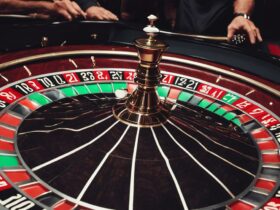




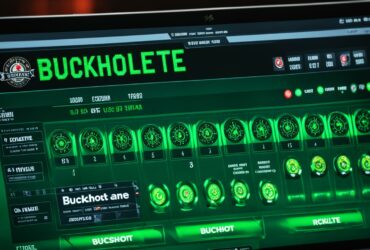


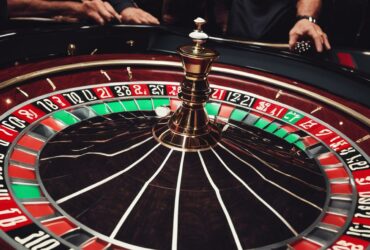

Leave a Reply